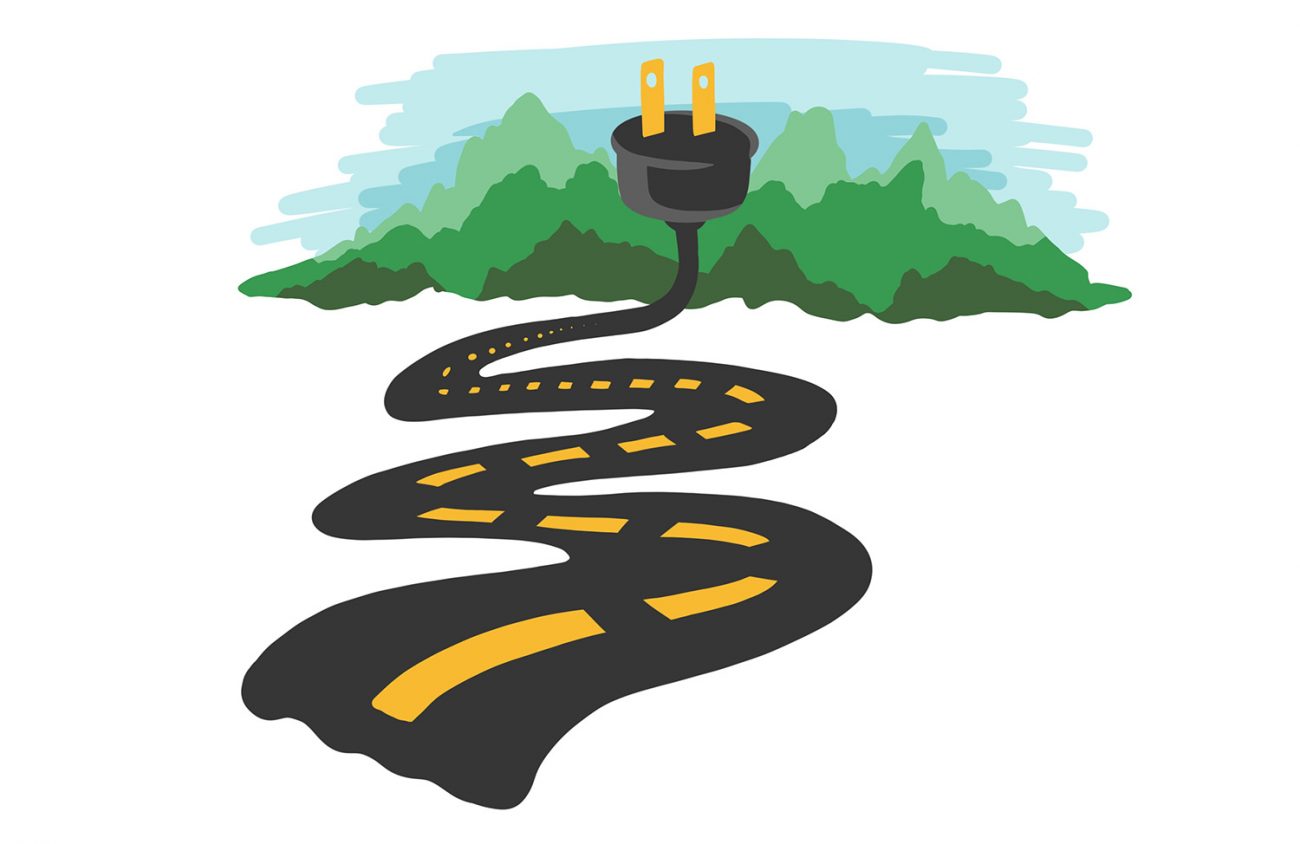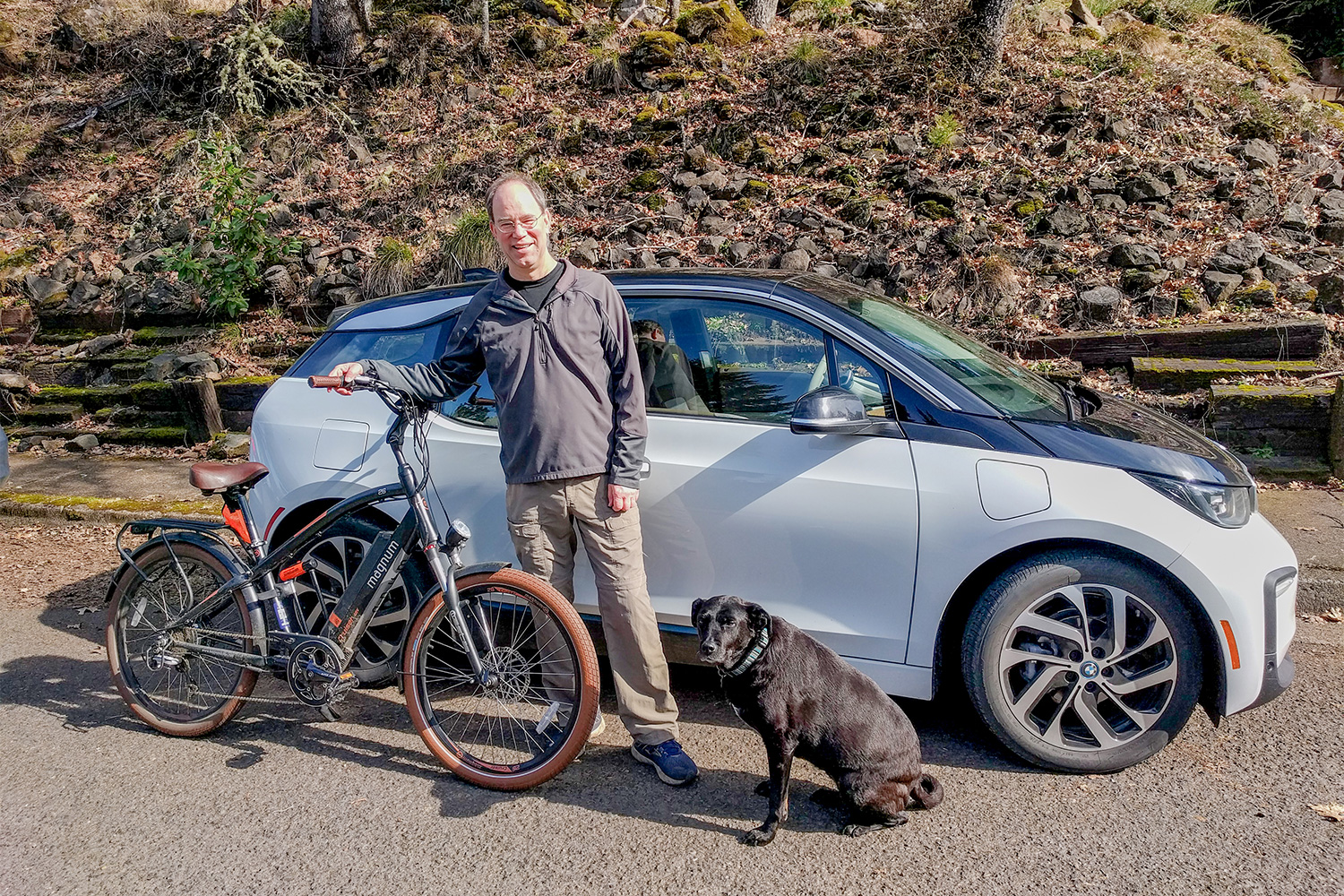Sponsored Content By EWEB
Eugene Water & Electric Board is committed to sustainable energy usage and increasing the accessibility and adoption of electric vehicles (EVs) is part of our vision.
In the Pacific Northwest, we can take advantage of low-carbon hydroelectric energy sources. That means making the switch to an EV has an even bigger impact towards reducing carbon emissions. EWEB has been actively working on efforts to increase EV adoption, bring equitable access to EV technology, educate and increase awareness of EVs, and expand charging infrastructure in our community. In 2021 we are expanding our EV efforts and programs, so stay tuned!
You can also take advantage of the Oregon Clean Vehicle Rebate Program, a statewide rebate that can save you up to $5,000 on the purchase of a qualifying electric car. Federal tax credits can further ease the upfront costs.
Still need convincing? Here are more reasons to consider an EV for your next vehicle purchase:
EVs have the range to fit your needs
Most people drive less than 40 miles a day, according to the U.S. Department of Transportation, which makes EVs practical for everyday travel. Many popular models offer at least 200 miles of range and are increasing their range every year. There is also a variety of cars to choose from on the market now, from minivans and SUVs to sporty sedans.
They are fun to drive
Regenerative braking, high-torque electric motors and battery range innovations are making EVs the driver’s choice for a fun, high-performance ride. Many have a low center of gravity, making the handling smooth and comfortable. They are also quiet, so you can enjoy a peaceful drive cruising down back country roads.
Charging your EV is easier than ever
Most people charge their electric vehicles at home. You can plug in overnight and have a full charge each morning. While you can charge your vehicle with a standard 120-volt outlet, a Level 2 home charging station allows you to charge in less than a third of the time. This faster rate of charging allows for flexibility to charge your EV during off-peak times.
We want to make it easy, fast and convenient to charge your EV at home using the cleanest, off-peak energy. EWEB’s Smart Charge Rebate can help you pay for a qualified Level 2 home charging station. Visit EWEB.org/EV to learn about our $500 rebate for at-home charging stations.
There are dozens of charging stations in the Eugene/Springfield area, with more on the way. If you’re traveling around the state, Oregon’s Electric Byways will get you from the coast to the mountains or Portland to Ashland. Beyond that, the West Coast Electric Highway is a network of DC fast-charging stations located every 25 to 50 miles along Interstate 5, Hwy 99 and other major roadways along the Pacific coast.
You also don’t need to wait until your battery is fully drained before you recharge. Charging stations are common at many business locations, allowing you to charge during errands or your workday.
The fuel economy is unmatched
The U.S. Department of Energy created the “eGallon” metric to illustrate the cost of fueling a vehicle with electricity compared to a similar vehicle that runs on gasoline. For example, if gasoline costs $3.60 a gallon and the eGallon price is $1.20, that means that for $1.20 worth of electricity you can drive the same distance as you would for $3.60 worth of gasoline. EWEB customers have an eGallon cost of less than $0.80.
The relative stability of electricity rates compared to gasoline is an added benefit. EWEB residential electricity prices, for example, have remained unchanged since 2016. In our area, it will cost you around $405 per year to charge an electric vehicle compared to $1,655 per year to fuel up a gas-powered car. And fewer moving parts make electric vehicles ultra-low maintenance.
They have a lighter footprint
Battery electric vehicles have no tailpipe emissions and our clean power makes EVs a particularly good choice for EWEB customers looking to lower their carbon-footprint in a significant way. Over 80 percent of EWEB’s electricity comes from carbon-free hydroelectric plants.
We want to go even further
EWEB knows that one of the biggest barriers to increasing EV adoption and access to this technology is upfront costs. Although EVs are cheaper to own and operate than an internal combustion car, many households cannot afford a new vehicle that usually starts around $30,000. EWEB is working with community partners to make EV technology more accessible and to increase awareness of the benefits of EVs, while addressing common misconceptions about the technology. Follow along with us for updates on future projects.
Here’s what our community has to say about their EVs:
David, who owns a Chevy Bolt
“When Chevy came out with the Bolt EV, with a range of 236 miles, it looked just perfect and indeed it has been. It’s the best car that I’ve ever driven.
“I acquired it from the local Chevy dealer, and they gave me a great deal. I was also attracted to the fact that it was built in Michigan with union labor. While I got it for its clean qualities, what I really enjoy every day is the quietness, the power and the technology. It’s just great fun to drive any time.”
Kay, who owns a Nissan Leaf
“Life became much easier when I installed a charger in my garage, but before that, I would charge it at Lithia or at EWEB or even at the county buildings. Some of those services are no longer free, but they are still very convenient. EWEB had a subsidy program that applied to the installation of my home charger, so that was an added gift!
“An electric car is not suitable for all lifestyles, but I am very grateful that I am able to use it for some of mine. I love it. I love it being quiet; I love its features; I love its acceleration and I love the fact that I can do what I would normally do without contributing quite so much harm to the environment.”
Charlie, who leased a Chevy Spark and currently a BMW i3
“As a long-time purchaser of inexpensive vehicles with 4-cylinder engines, I was surprised to find, for the first time, that I owned a car that was fun to drive. I don’t generally drive for fun, but the ‘zippiness’ of the Spark EV, thanks to the innate characteristics of EV engines and drive trains, provided an unexpected amount of satisfaction.
“After our successful experiment with the electric Spark, we were ready to invest in an EV that could be used for everything: long-distance trips as well as the in-town commute. We settled on the BMW i3 with a range extender. The ‘range extender’ is a very small gas engine that provides an extra 50 to 70 miles of travel if you need it. The rated all-electric range of the i3 is 153 miles, which is less than many 2019 EVs, but I liked the security of knowing I could always keep going with a stop at a traditional gas pump.
“After our first 2,500 miles of use, we have put 1.8 gallons of gas in the tank and even that was mostly avoidable. The range extender primarily functions as a security blanket.”

